Farmers in Haiti: Growing crops in spite of drought and floods
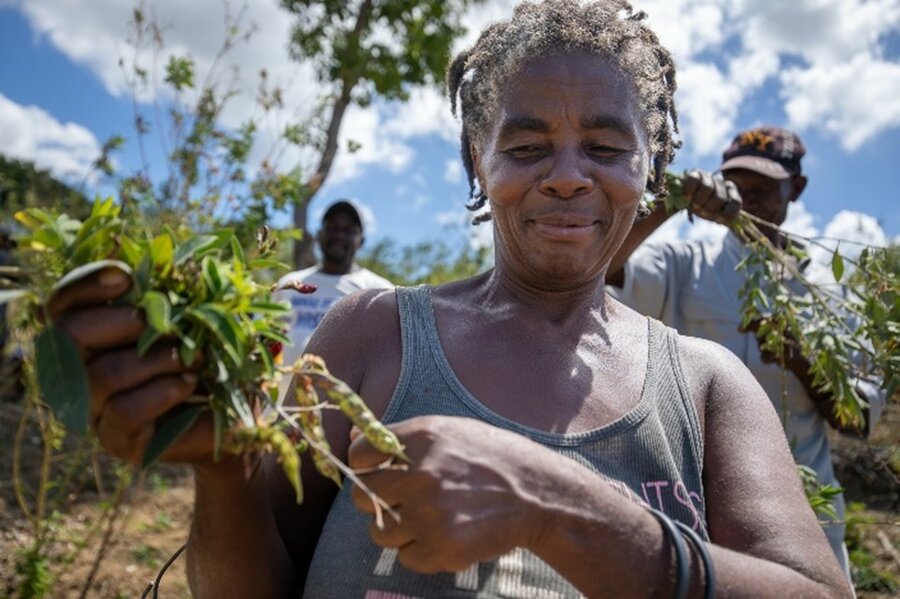
“People in the Paul Atrel area are poor, so for many years they’ve cut down trees to make charcoal,” says community leader Emile Elinos. “This led to soil erosion and so it became impossible to grow crops to sustain our community.”
Now rural communities in the North-Ouest department of Haiti are successfully implementing measures they have advocated that will help them boost their resilience to adverse weather and live more secure futures.
The erosion of soil on hilly farming land on higher ground due to deforestation over many decades has rendered a lot of agricultural land unproductive and unworkable, but with the support of the local government, the World Food Programme (WFP) and other partners, farmers are now producing crops again.
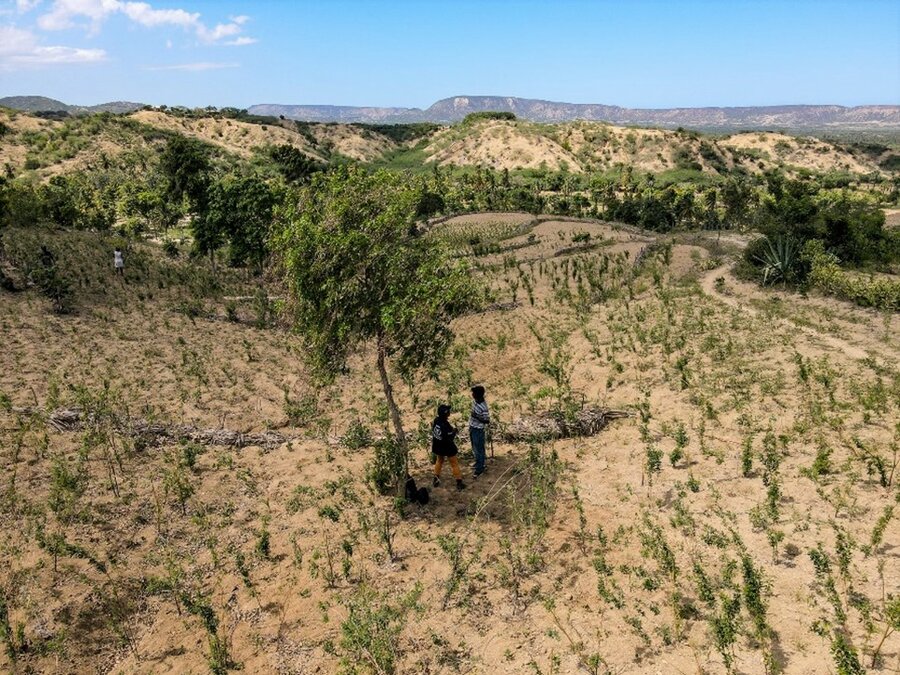
WFP supports the rehabilitation of land through such programmes – farmers are paid to plant trees and build structures to prevent erosion, protect the soil and allow crops to flourish again.
It comes as the UN agency warns of unprecedented levels of hunger around the world – figures just out for Haiti show hunger levels remain high as the political instability, extreme weather events and growing inflation limit access to affordable food.
According to latest Integrated Food Phase Classification (IPC) report, the global standard for measuring food insecurity, some 4.5 million Haitians are projected to be in severe hunger and of these more than 1.3 million are likely to be at 'emergency' level by June.
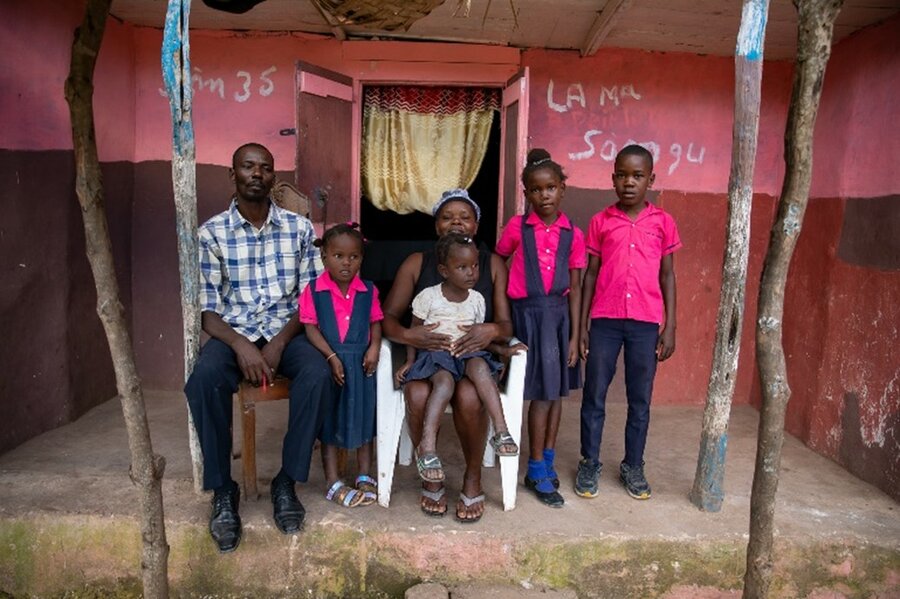
Haiti is part of a ‘ring of fire’ – stretching from Afghanistan, through to the Sahel and Latin America – where WFP says extreme weather, conflict, COVID-19 and rising costs are pushing people to the brink.
With global food prices at an all-time high, WFP is also concerned about the impact of the Ukraine crisis on food security, which will likely continue to negatively impact purchasing power in a highly import-dependent country.
“We are now planting different types of peas and beans on this land for the first time in many years,” says Germathes, who like other members of the community has received WFP support to carry out the land rehabilitation work.
In the valleys below Paul Atrel, flooding is a regular occurrence that causes immense damage. The primary school in the town Cabaret closed down after the last waters came and students were forced to look for another school to continue their education.
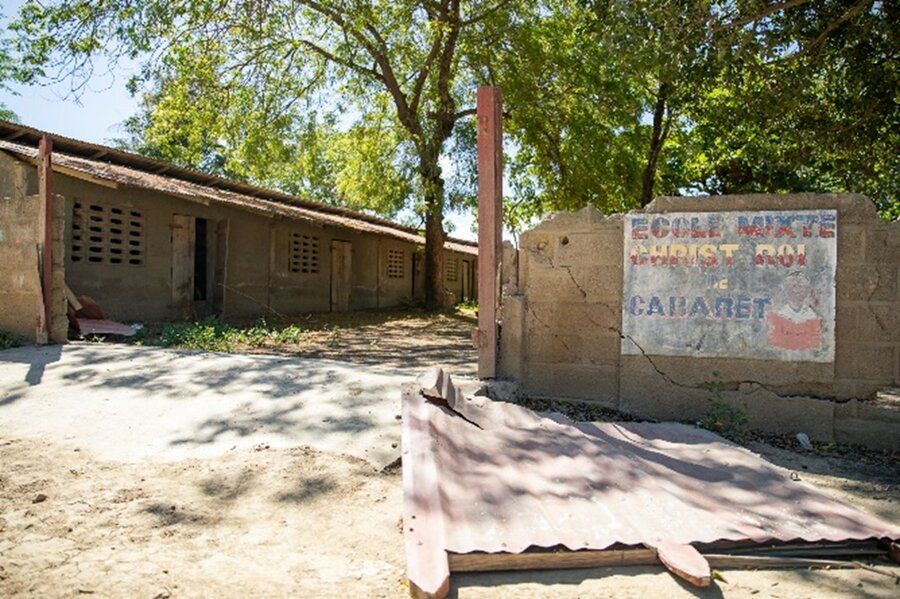
“When it rained, we always expected the worst,” says Rose Marie. “One day when the rain came, I rushed to help my neighbour whose house was flooded, and then the community came to my rescue, but I lost everything. As a community, we knew what we had to do to stop the flooding. We just didn’t have the money to do it.”
“The solution was to build structures which controlled the flow of water and prevented flooding. WFP supported the rehabilitation. WFP programmer officer Rose Senoviala Desir says the school and homes are now better protected adding that “people can now cultivate crops on plots that before flooded regularly.”
Cosechando un destino sostenible en Perú

A few miles away, back in the hills in the village of Troissel, the community worked with the support of the Ministry of Public Works and WFP to build a road which has linked them for the first time to local markets as well as healthcare facilities and schools.
“We all worked and [received cash assistance] for clearing rocks and digging in order to build this road,” says Jean Ronel Saint-Preux.
Families are now able to travel to sell goods at the market, spending 40 minutes on a roundtrip by motorbike rather than the seven hours it would take to walk in the past.
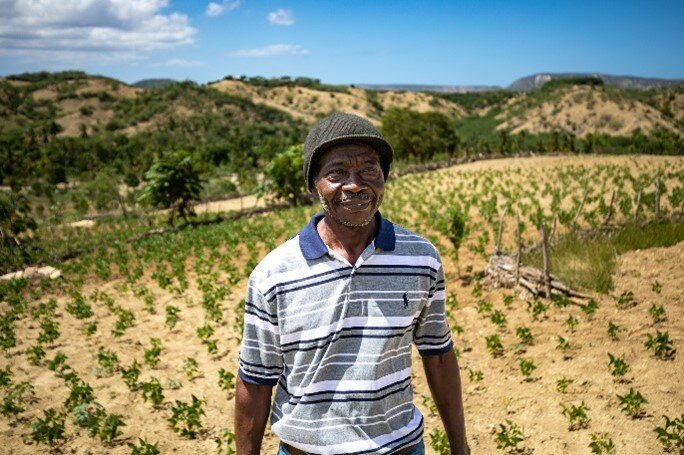
Many have saved money in the credit union set up as part of the road rehabilitation project.
There is a strong tradition of farming in the north of Haiti and farmers want to preserve their way of life and provide a secure future for their families. These farming communities know what needs to be done; this is their land and their heritage. They just do not have the available resources, which is why the support of WFP, its partners and donors is so important.
This year, WFP Haiti’s resilience programmes are supported by Switzerland, Canada, South Korea (KOICA) and the US Agency for International Development (USAID/BHA).
Daniel Dickinson is a Senior Multimedia Editor at the Department of Global Communications of United Nations HQ in New York

